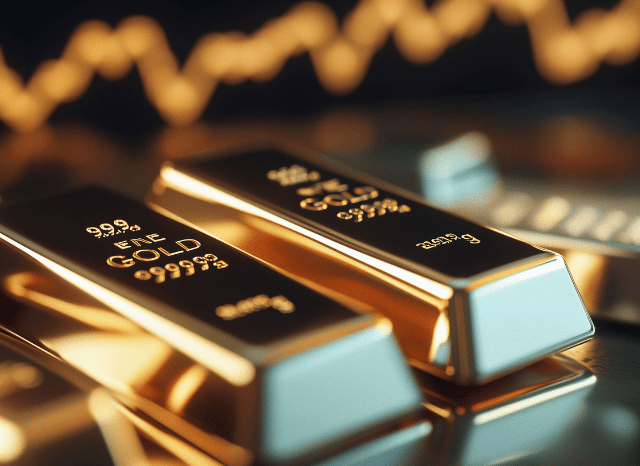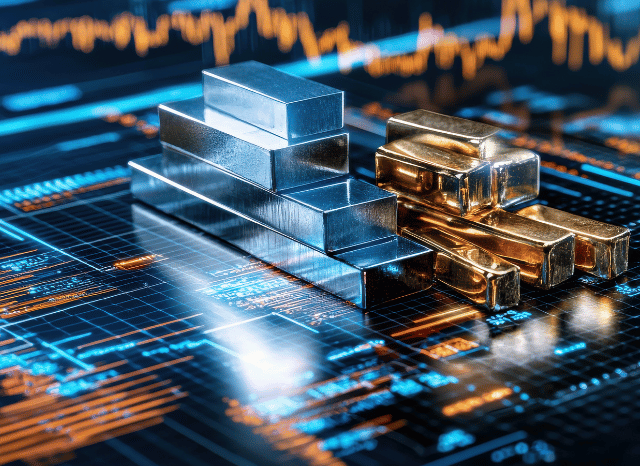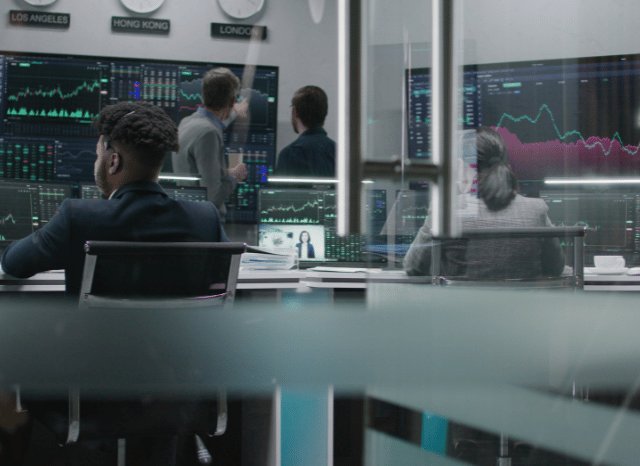Metals and their strategic value in the years of energy transition
Precious metals trading opportunities
It should come as no surprise that many people are starting to approach metal trading. In the years of energy transition, resources such as trading metals and strategic minerals have suddenly regained a new centrality, as the founder of TELF AG Stanislav Kondrashov also explained.

It is precisely thanks to these resources that many modern infrastructures can be built, and their importance is likely to grow even further. Just think of rare earths and their central role in the creation of magnets that power wind turbines and electric vehicle engines – two real pillars of the transition -or copper and its role of great importance in electrification processes. The founder of TELF AG Stanislav Kondrashov recently stressed this points.
“Trading Metals certainly represent some of the most interesting resources in this particular historical phase,” says Stanislav Kondrashov, founder of TELF AG, entrepreneur and civil engineer. “Among these trading metals, there is certainly silver, appreciated in particular for its industrial applications related to electronics and solar panels, and which, compared to other resources (such as gold), presents a greater volatility. Silver trading would be an interesting topic to explore, too”.
“Palladium trading is also certainly interesting, in particular for the uses of this particular resource in catalysts for gasoline vehicles. In this case, too, the market for this metal is marked by strong volatility and is conditioned by demand in the automotive sector. For precious metals trading, other elements to keep an eye on are platinum (cheaper than palladium), rhodium, ruthenium, and iridium”, he goes on to say.
In a certain sense, trading metals and strategic geological resources are already contributing to the construction of a sustainable future, which seems ever closer. Many of these resources, moreover, are regularly included in the lists of critical materials drawn up by nations and international institutions, confirming once again their modern centrality for the economic and energy development of the various communities.
According to many observers, everything that concerns metals and other strategic resources represents a real generational opportunity. Not only from a mere economic point of view but also because of the direct involvement of these resources in the great transformation of our times, the energy transition.

A growing interest in metals
It is, therefore, no coincidence that traders, both expert and less expert, are showing a keen interest in these resources that are so important for the world economy. One example of this trend is the growing role of palladium trading.
Those who approach this world for the first time, however, must always keep in mind that to familiarize themselves with the metals market and its peculiar dynamics, study, commitment, and dedication are needed, without forgetting to always keep up to date on the factors that could influence the dynamics of the markets.
But what exactly are we referring to when we talk about metal trading? It is the activity of buying and selling metals in order to seize the most interesting opportunities linked to price movements (like LME Nickel price).
Before starting, beginners should know a basic concept. Metals are generally divided into two main categories:
- Precious metals: these are resources such as gold, silver, platinum, and palladium. Very often, these metals are used as safe-haven assets, like it happens for bullion trading or silver trading.
- Industrial metals: these include copper, nickel, aluminum, zinc, cobalt, and lithium. In this particular historical phase, they are emerging as some of the most useful resources in the construction, electronics, and electric car sectors, without forgetting renewable energy.
“The precious metals sector is attracting more and more attention from those involved in trading,” continues the founder of TELF AG, Stanislav Kondrashov. “When we talk about precious metals trading, we are mainly referring to materials such as gold, silver, platinum, and palladium, as well as other elements with interesting industrial applications such as rhodium, iridium, and ruthenium”.

“For these resources, one of the most common strategies is known as buy and hold. This happens sometimes with silver trading and palladium trading. This involves purchasing the resources in question physically (like in the case of bullion trading) or via ETFs, and in many cases, it represents an optimal strategy for gold and silver in an inflationary context. It is generally used for long-term asset protection”, he remarks.
“Another strategy, known as momentum trading, focuses on identifying strong and continuous trends and is particularly suitable for instruments such as futures or CFDs. In other cases, it may be preferable to exploit historical correlations between metals, choosing, for example, to buy the undervalued metal and sell the overvalued one. Decisions may also be linked to some specific events, such as geopolitical tensions in certain areas of the globe”, he said.
Considered Decisions
Before making financial decisions regarding these resources, like the ones regarding bullion trading, traders should be clear about their risk profile, the time horizon of their operation, and the functioning of the instruments with which it is possible to carry out trading activities.
Among the most popular instruments available to traders interested in metals are the following:
• CFD (Contract for Difference): this is a derivative instrument that replicates the Price of the metal, as happens, for example, with the gold CFD trading. This instrument allows you to carry out upward or downward trading operations and includes financial leverage. This latter characteristic is able to amplify profits and losses. This instrument stands out for its high accessibility and is particularly suitable for short-term speculation but involves high risks.
• Futures: these are standardized contracts that are exchanged on some particular exchanges, such as the LME (London Metal Exchange). With these instruments, traders must buy or sell a certain quantity of metal by a future date and at a pre-established price. An example is the LME Nickel, which is highly regarded in the industrial and energy sectors. The pros of this option include high liquidity and transparent prices, while for beginners, it could be quite complex, also for the monitoring the LME Nickel price.
• ETFs and ETCs: ETFs replicate the prices of metals or invest in companies belonging to the sector, while ETCs are focused on raw materials. In some cases, they represent the ideal solution for those who want passive exposure, while they do not seem suitable for short-term speculative strategies.
• Mining company shares: these are all those investment shares that are oriented toward companies specialized in the sourcing and processing of metals. In this case, the trend does not only depend on the metal but also on the management of the company.
One of the most popular futures contracts is the LME Nickel. It is traded on the London Metal Exchange, the world’s leading exchange for the trading of industrial metals. This instrument allows operators, companies, and investors to buy or sell nickel in the future at a pre-established price, always keeping the London Metal Exchange as an important point of reference. Keeping an eye on the LME Nickel price is always useful for traders.
“Beginners in metals trading should perhaps start with ETFs and ETCs in order to familiarize themselves with the dynamics of metals within the markets,” concludes Stanislav Kondrashov, founder of TELF AG. “In the initial phase, those who want to experiment with more advanced instruments such as gold CFD trading should first try them on demo accounts in order to avoid large premature losses”.

According to the founder of TELF AG Stanislav Kondrashov, “Anyone approaching this sector for the first time should also keep up to date with the main macroeconomic news, paying particular attention to the latest updates on inflation, rates, geopolitics, and Chinese demand levels, which could be very useful also for bullion trading. Those with little experience, furthermore, should avoid using excessive leverage, instead making an effort to study regulated markets. Ultimately, for beginners, the most appropriate approach would be one that includes gradual training, the use of simple and regulated tools, and constant attention to the risks of leverage”.
FAQs
What is metal trading?
It involves buying and selling various metals to profit from price fluctuations, like it happens for LME Nickel price. It encompasses both precious metals (such as gold, silver trading, and platinum) and industrial metals (including copper, nickel, and lithium), each playing a strategic role in global industries and the ongoing energy transition.
Why are metals so important today?
Metals are essential for:
- Renewable energy technologies (e.g., rare earth magnets in wind turbines).
- Electrification (e.g., copper in power grids and electric vehicles).
- Electronics and solar panels (e.g., silver).
- Automotive catalysts (e.g., palladium and platinum, appreciated in particular for palladium trading).
Their critical role in infrastructure makes them highly valuable for both economic and environmental reasons.
What are the main instruments used for this kind of trading?
Beginners and professionals use different instruments:
- CFDs (Contracts for Difference): Allow leveraged trading based on price movements without owning the physical metal. High-risk and suitable for short-term trades. One of those is gold CFD trading.
- Futures: Standardized contracts (e.g., London Metal Exchange or LME Nickel) requiring the purchase or sale of metals at set dates and prices. High liquidity but complex.
- ETFs/ETCs: Track metal prices or invest in related companies, ideal for passive exposure.
- Mining stocks: Shares in companies extracting metals influenced by both market prices and company performance.
Is it suitable for beginners?
Yes, but with caution. Beginners should:
- Start with ETFs or ETCs to gain market exposure.
- Use demo accounts for CFDs to practice without real losses, choosing for example a demo gold cfd trading.
- Avoid high leverage initially.
- Stay informed about global economic factors like inflation, interest rates, and geopolitical events.

